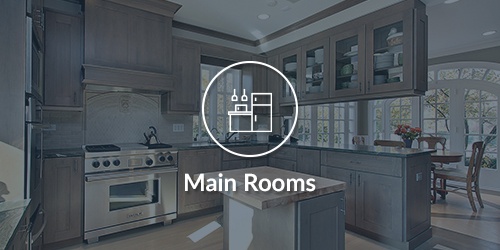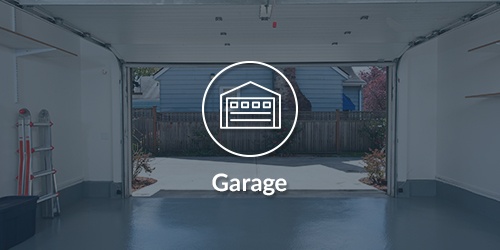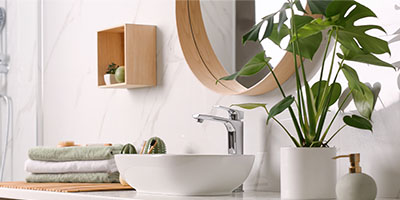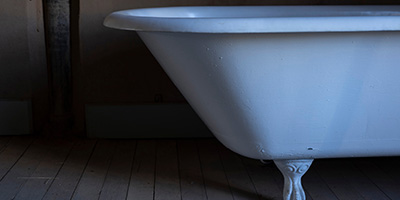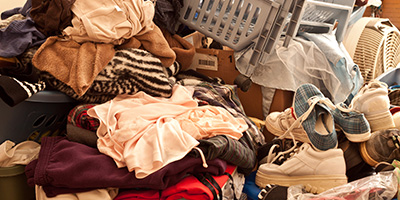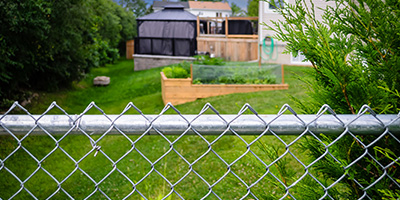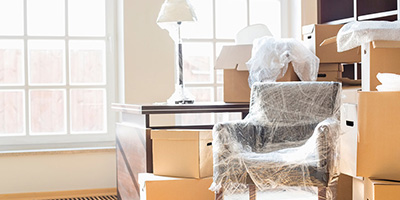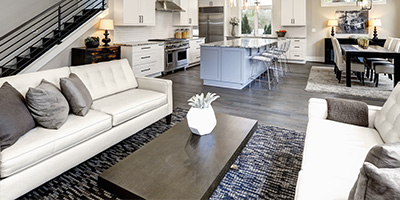Organizing Tips for Your Home
Tame your mess and keep it at bay with our simple rules for organizing your home.
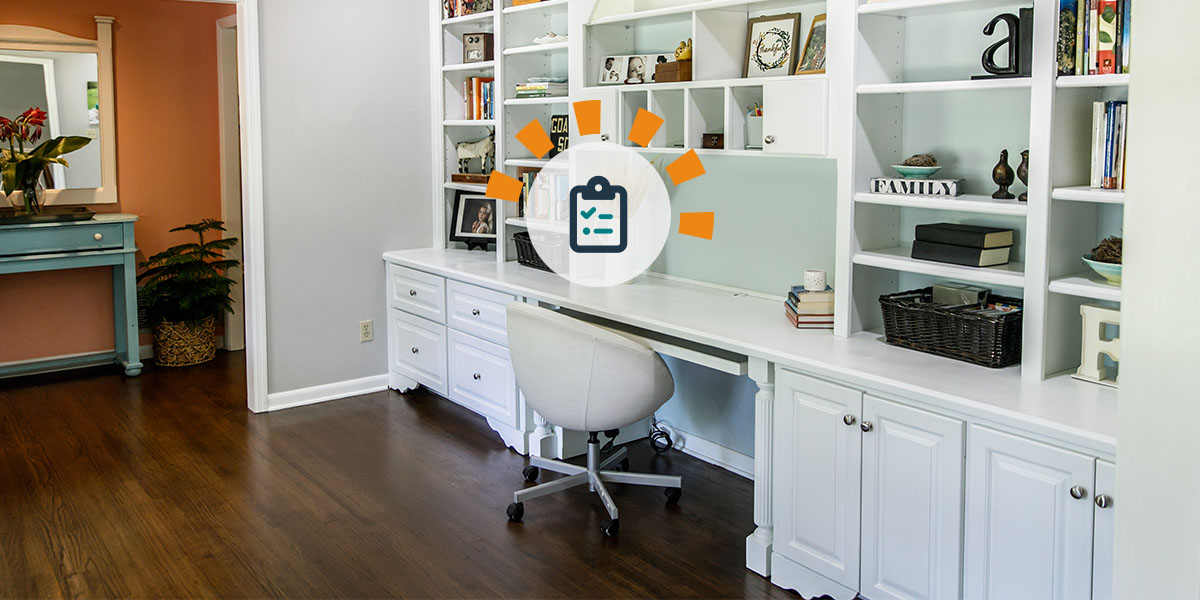
A Guide to Organizing Your Home – Here’s Where to Start
The golden rule of organizing is to approach it as a lifestyle. When you put effective systems in place and make organizing part of every day, keeping your home tidy becomes less tiresome and much easier to maintain. However, if you’re reading this, you might be looking for some help to jump-start your efforts. We’ll get you on track with some easy rules for decluttering and organizing, then help you keep your home in check with tips from some of our favorite organization experts of 2023, including:
What Are the Benefits of Being Organized at Home?
We spoke with several professional organizers to get their home organization tips, and when we asked them about the advantages of organizing, they all said the same thing: getting your house in order leads to reduced stress, heightened mental clarity and increased energy. Need we say more?

"When your home is disorganized, you lose things. What does that cost? Time lost searching for items, money spent replacing items lost and opportunities lost not being prepared for what comes your way. Having an organized home contributes to your ability to focus on other things of importance not weighted down by overwhelming chaos around you."
7 Rules & Tips to Create an Organized Home
It’s time to get down to it. Here are our top guidelines for organizing your home. We'll help motivate you first, then share the best ways to order and store everything in your house.

1. Set an Achievable Goal
Start by setting aside some time on your calendar. Making a concrete plan will help you commit to the project and give you time to eliminate distractions, like finding a babysitter for the kids or continuing to push organizing aside when something more fun comes up.
Separate your home into chunks to avoid getting in over your head. Organize one room at a time, or even one section at a time if you’re dealing with a large or particularly unorganized section of the house. These small steps will make the end goal less daunting.
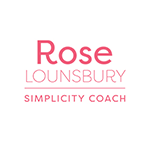
"Decluttering can often feel overwhelming because we see everything we need to do. Set a timer for 15 minutes and just tackle one drawer. When the time is up, you can quit if you want — but I bet you’ll keep going a little bit longer."
Get Help and Make Organizing Fun
Don’t leave what can be an overwhelming task all to yourself. Professional organizer Jane Stoller says to involve the people you live with. Have everyone sort through their own belongings and see what they can get rid of. Incentivize your kids by having a garage sale and telling them they get to keep the earnings on the items they sell.

"Don’t force organizing upon others, but explain the benefits. Let them know how the reduced stress and the less time spent digging through clutter will leave them more time to do the activities they enjoy. Then, play some music and have an organizing party."

2. Take Everything Out
When you can see every item you’ve shoved in a closet or drawer, you’ll get a better sense of just how much stuff you have and whether it’s really necessary to keep it all. With a glance, you can first decide if everything you see is even in the right part of the house.
If you’re organizing an area of the home that acts as storage, such as the garage, attic or basement, consider making an inventory list of everything in the room. This will help you keep track of what you own and how many of each item you have to organize and declutter effectively.

Decluttering Tip
No matter what you find while clearing out your home, we're here to help. Check out our disposal guides to learn about every removal option available — even for bulky items that are tough to get rid of.

3. Group Like Items Together
Categorizing your belongings will help you keep track of everything. If you store all your cleaning supplies in the same place, you can quickly and easily find what you need when there’s a spill to clean up. This will also allow you to see what’s not being used. As you group items together, create a pile for anything you haven’t used in a while and duplicates. Assuming they are in good condition, decide if you want to donate or sell these items. Also, create a group for outdated, broken and damaged items and recycle or toss these things. Make sure to get anything you don’t use out of the house ASAP.
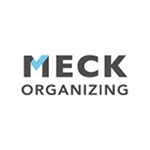
"Have a plan for what to do with things you are parting with and a time you want them gone. If your friend wants an item you’re giving away, give them a time they need to pick it up by. If you have trash that won’t fit in your bins or donations that won’t fit in your car, line up help: book a hauler and/or make a pickup appointment with a donation center."

4. Give Everything a Permanent Home
Now, give your grouped items a designated place so you’ll know exactly where to put them away after each use, making cleanup a breeze. This makes it easier to keep your home organized moving forward.
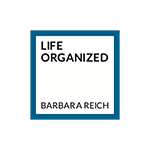
"Store items where you use them. This will ensure that the organizational flow of the house makes sense."
Take Note of What Doesn’t Fit in the Space
As you’re grouping your belongings and putting them away, take stock of how you’re organizing. Are you using a successful system? For example, do you have more shoes than cubby space or more coats than hooks? This may help you reconsider getting rid of things you decided to keep. If they’re truly items you use often, you may want to add more storage space.

5. Invest in Innovative Organization Solutions
Don’t be afraid to get creative when you’re putting things away. Try the following storage tips when organizing your home:
Vertical Space
This can be a useful space-saving tactic and as simple as hanging hooks on the mudroom wall for coats in the kitchen to store pots, pans and cooking utensils. Use shelves anywhere in the home for some extra space or try hanging organizers on the back of doors to keep track of craft supplies, jewelry, shoes, etc.
Plastic Bins
Containers you can close and stack are an easy way to keep track of items that don’t get used often, like holiday decorations and seasonal clothing. Bins are easy to label to keep like items grouped together and organized. Use anything as simple as painter’s tape or sticky notes and a permanent marker, or get fancy with a label maker.
Baskets
If you’re looking for a decorative but effective way to keep a frequently-used space in order, baskets keep toys, blankets and other items from taking up space on the floor or in living areas.
Cubbies
Use cubbies in your closet, the mudroom or wherever your children do their homework to keep track of shoes, sporting equipment and school supplies.
Pegboards
These can be used in a variety of ways, from hanging tools at your workbench in the garage to holding baskets to organize supplies in your home office.
Drawer Dividers
An obvious and effective solution to keeping clutter at bay in the kitchen, bathroom, bedroom and anywhere else you have an unruly drawer. Drawer dividers are a great way to save space and organize like items.
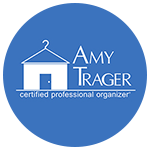
"Change your systems when you need to. If items come and go through your space, your organizing needs and systems may change over time. A college student moves out, you’re suddenly working from home or you get married — these will all change the needs and use of our spaces."

6. Minimize Clutter on Surfaces
As you’re implementing these new storage ideas, do your best to make sure everything is going into a cubby, basket, drawer or whichever storage solution you have in play. This will help keep your counters and other open spaces clear; anything left out should be something you use every day, but even these items should be contained. For example, keep a jar on your kitchen counter for sugar for your morning coffee or use a tray on the bathroom vanity to hold your glasses and everyday jewelry when you’re not wearing them.

7. Create a System for Paperwork
Have a designated place for mail, bills and important paperwork, and keep them organized with a filing system. Immediately toss anything you don’t need, like junk mail, or shred important documents that you no longer need to keep. Don’t let these papers take up space on your counter or desk or in drawers — eliminate paper clutter by switching to paperless billing statements and removing yourself from junk mail lists.
5 Tips and Tricks to Keep Your Home Organized
Once you get your home in order, don’t let your hard work go to waste. "When you label everything, everyone in the household is accountable for knowing where items are kept and responsible for returning them," said Reich.
You can finally search for anything you need and know exactly where to find it. Your mind is clear, you waste no time sifting through clutter and you have more time to do things that matter most to you. Use the following advice to keep your home organized once and for all:
- Label your storage solutions.
- Get rid of older items as soon as you replace them.
- Always put items back in their correct spot after using them.
- Designate 15 minutes a day to tidy up anything out of place.
- Create “zones,” in storage-related areas of the home for each storage category.

"Do a walk through of your home every night for 15 minutes to reset. I start my dishwasher, put things away, recycle that day’s newspaper and put things away. If the house starts calm in the morning, everyone is off on kinder footing for the day."
TL;DR: Follow The Organizational Triangle®
It’s as simple as 1, 2, 3: one home for everything, like with like and something in-something out. Professional organizer Andrew Mellen says to follow these three golden rules to keep a clutter-free and organized home.
The first part is simple — every item needs a home. But, more than that, you should always put items back in their designated home once you’re done using them. This means that everything you own should only be in one of two places: in your hand or where it’s stored.
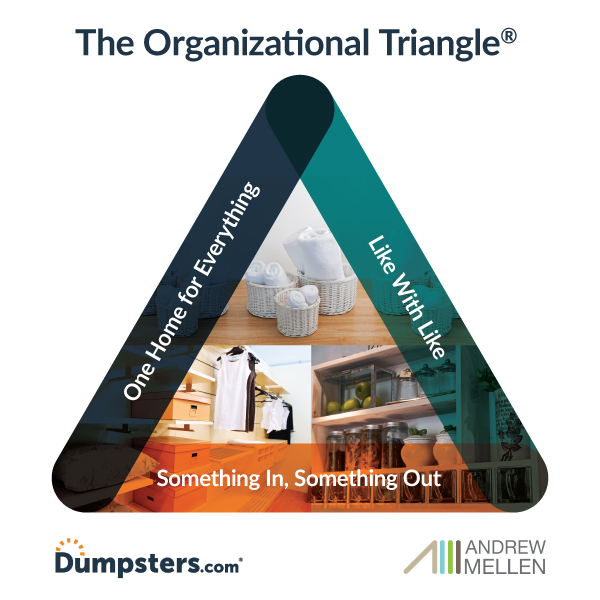

"There is never a more convenient time to put something away. Put it away as soon as you’re done with it. It takes the same amount of time whether you do it now or later."
The next leg of the triangle, like with like, leaves no exceptions. Mellen says that all like objects should be grouped together, not most of them. For example, you take a screwdriver from its home — the workbench in your garage — to tighten a kitchen cabinet screw. You decide to leave it in a kitchen drawer instead of putting it back with the rest of your tools so it’s in a “more convenient” spot the next time you need it. However, months go by and the next time you need a screwdriver, you go to the garage, assuming it will be with all of your other tools. Now you can’t remember the “more convenient” place you last left it. Your so-called hack has failed. Stick to the tried and true — group all like objects together and put them away as soon as you’re done using them.
“Once everything has a home and its siblings are together, you are organized,” Mellen says. “Staying organized is the trick.” For that, he says to follow the final leg of the triangle: something in-something out. According to Mellen, there’s no rule on how many of each item you can have; you can have however many things fit into the space you have. But once everything has a home and all like things are together, then it’s all about staying organized.

"Once you’ve achieved equilibrium, you’re just maintaining order. The way you do that is the third leg of the triangle — something in, something out. You’re not accumulating things anymore. You should only bring new things into the home if you’re replacing them or updating them."
Now You Have What You Need to Get Organized
You have the mindset to organize your home like a pro, so it’s time to get rid of clutter and create a system. If you’re having trouble getting motivated, start with low-hanging fruit, like organizing small areas of the home or tossing items that you know belong in the garbage. Try renting a dumpster if you’re cleaning out a lot of clutter to help you start fresh. When you get stuck figuring out the next step, organize your home with our room-by-room checklist as you put this list of rules to work.
Expert Contributors

Kathy Vines
Kathy's goal is to bring serenity and order to all her clients. A Certified Professional Organizer, she founded Clever Girl Organizing in 2013, working out of the Greater Boston area. Kathy leans on her human resources and psychology background to help ensure all of her clients get a custom organization solution that focuses on their individual needs.

Rose Lounsbury
Based out of Dayton, OH, Rose started her journey into minimalism in 2012. She has since penned an Amazon top-selling book, Less:Minimalism for Real, and helps her clients start living a simpler life with less stuff, less stress and more time for themselves.

Jane Stoller
From an early age, Jane knew that organization would be a passion. After organizing spaces and businesses for friends, Jane founded Organized Jane in 2017. She has also written two best-selling books, Organizing for Your Lifestyle and Decluttering for Dummies, to help bring her knowledge to the worldwide stage.

Nancy Meck
A professional organizer since 2004, Nancy started her company, Meck Organizing, in the Atlanta area using techniques she learned while working in the public health sector. After a decade, she relocated home to Los Angeles to expand Meck Organizing while maintaining her Georgia service. Nancy specializes in estate management, clutter control and moves.

Barbara Reich
Based in Manhattan, Barbara has over 20 years of experience in organizing people, their lives and spaces. She has been featured in the New York Times, the Wall Street Journal, the Washington Post, the New York Post and countless other publications. Her book, Secrets of an Organized Mom, is the 2014 winner of the Mom's Choice Award.

Amy Trager
Certified Professional Organizer and member of NAPO, Amy has been working in the Chicago area since 2006. She has a custom degree from Bradley University that allowed her to study in the organizing industry. She has worked in Housing and Interior Design Concepts, Family Systems and Applications.

Denise Allan
As the founder of Simplify Experts, Denise's goal is to turn chaos into calm throughout the Seattle area. Denise specializes in chronic disorganization, attention deficit disorder and has ten additional certificates of study through the Institute for Challenging Disorganization (ICD).

Andrew Mellen
After growing up without organization in his life, Andrew has dedicated the last 27 years to becoming "The Most Organized Man in America" while lending his expertise to those in need throughout the country. Based in New York City, Andrew is an accomplished speaker, author and executive coach who has worked with some of the largest companies in the U.S. to help improve their organization and operations.
What Do You Think?
Which organization tip did you find the most helpful? We're listening. Head over to Twitter or Facebook,
and use #dumpstersblog to join the conversation.

![Orange button with an image of a checklist and a text overlay of Download the Checklist [PDF]](https://www.dumpsters.com/images/blog/download-home-organization-checklist-pdf-403x127.jpg)

